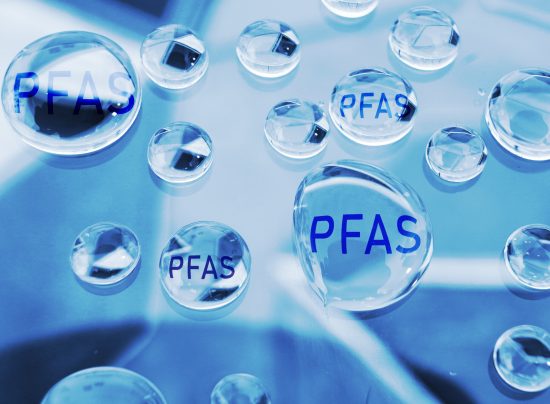Sandy Van den Broeck, ESA’s ESG Director, participated in the FPP4EU Collaboration Platform event held on 27 March 2025, where downstream users had the opportunity to engage directly with dossier submitters Dr Frauke Averbeck (Scientific Officer, BAuA) and Thijs de Kort (Deputy Head of Bureau, RIVM) to discuss the evolving U-PFAS restriction proposal.

An Evolving Proposal
The U-PFAS restriction process continues to be a learning journey for all involved. In response to feedback from the 2023 third-party consultation, a third restriction option (RO3) has been introduced. This builds on the original two options—RO1 (a full ban on all uses) and RO2 (a ban with specific derogations). RO3 would permit continued use under strict, controlled conditions that minimise emissions throughout the product life cycle, potentially managing risks without a complete ban.
Additionally, the dossier submitters have significantly expanded the list of uses and revised the background document to reflect these developments.
Next Steps in the Evaluation
September: continuation Electronics and Semi-conductors (SEAC)
New Sectors/Applications! (RAC & SEAC)
- Sealing applications: fluoropolymer uses in consumer, professional and industrial applications, including seals, pipe lining, gaskets, valve parts, etc.
- Other medical applications (e.g., excipients and packaging for medicines)
- Technical textiles: uses of PFAS in, for example, high-performance membranes, outdoor technical textiles (like tarps), etc.
- Printing applications: permanent parts and consumables for printing applications
- Military applications: uses for military purposes, often linked to uses for civil purposes
Seven of the nine planned updates to the background document have been completed. The dossier submitters confirmed that the final set will include no more than nine updates, covering all identified uses.
The ECHA Risk Assessment Committee (RAC) and Socio-economic Assessment Committee (SEAC) will evaluate all updates. SEAC’s draft opinion will be subject to a 60-day public consultation. Acknowledging the challenge of reviewing such a comprehensive file in this timeframe, the dossier submitters plan to recommend that ECHA publish the background document in advance. They also urge stakeholders to begin preparations now, using publicly available RAC and SEAC meeting conclusions.
Although stakeholders may request a longer consultation period, legal constraints may limit ECHA’s ability to grant an extension.
Conclusion
The U-PFAS restriction proposal remains a complex and dynamic initiative. Significant progress has been made, with 7 of 9 background document updates completed and efforts ongoing to ensure all uses are addressed.
The addition of RO3 reflects a thoughtful approach to balancing environmental goals with practical industry realities. Continued collaboration and early engagement from stakeholders will be essential to achieving a workable and effective outcome for this wide-reaching restriction.
New Update from the USA: EPA Extends Reporting Period for PFAS Manufacturers (Released May 12, 2025)

Under the Toxic Substances Control Act Under Act (TSCA) section 8(a)(7), the U.S. Environmental Protection Agency (EPA) finalised a rule requiring anyone who has manufactured (including imported) per- and polyfluoroalkyl substances (PFAS) or PFAS-containing articles in any year from January 1, 2011 – 2022 to electronically report detailed information to the EPA regarding manufacturing, use, disposal, byproducts, worker exposures, and environmental and health effects of those PFAS.
The start of the submission is now from April 13, 2026, and due by October 13, 2026, for most manufacturers, and by April 13, 2027, for small manufacturers.
While the delay to the start of the submission period is effectively immediate, the EPA will accept public comments on the reporting period change for 30 days.
Additionally, the agency is considering a separate action to reopen other aspects of this rule for public comment.
This extension offers manufacturers and importers additional time to prepare and gather the necessary data for submission.
Stakeholders are encouraged to stay informed and begin compiling relevant records to ensure timely compliance once the portal becomes active.
Stay tuned as we monitor how these developments unfold across Europe and beyond.
Sandy Van den Broeck,
ESG Director, ESA
